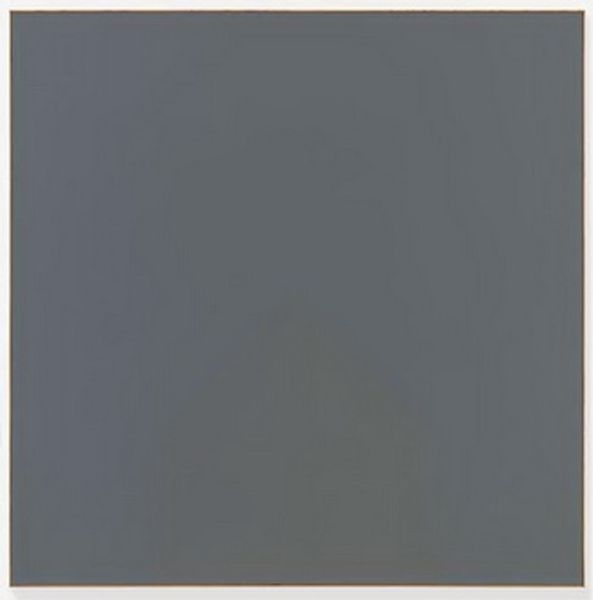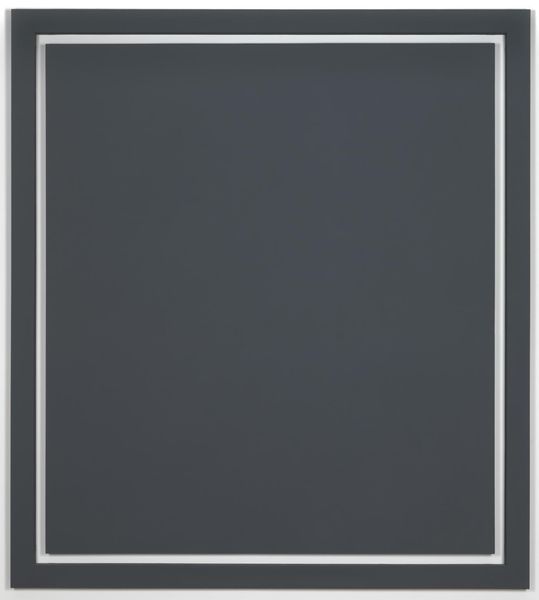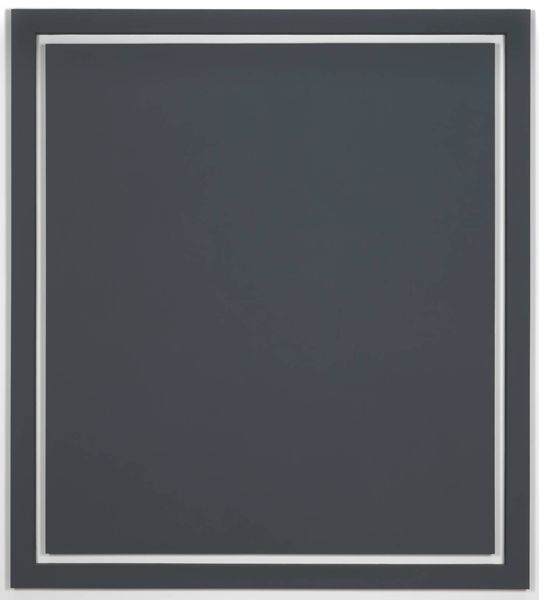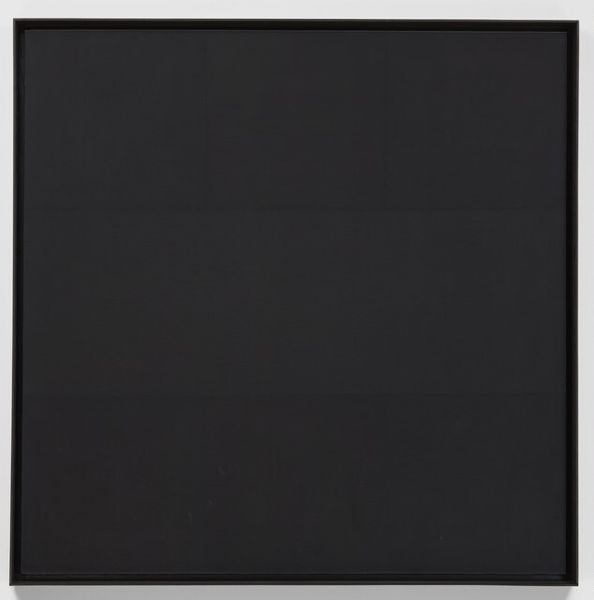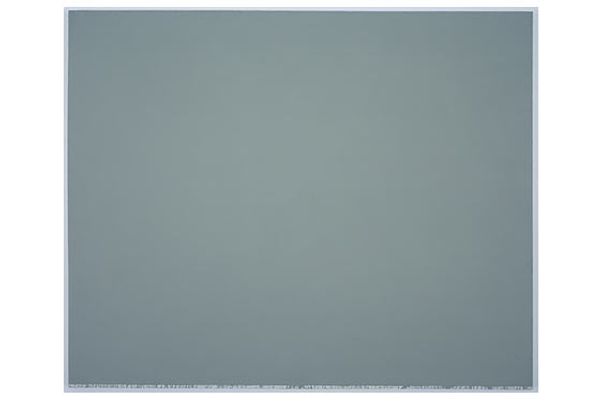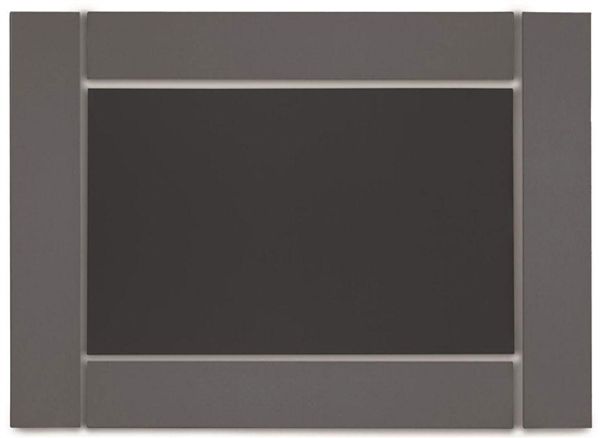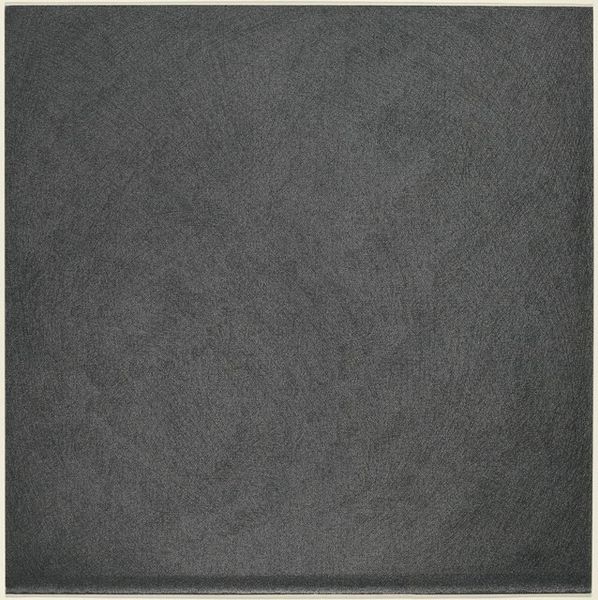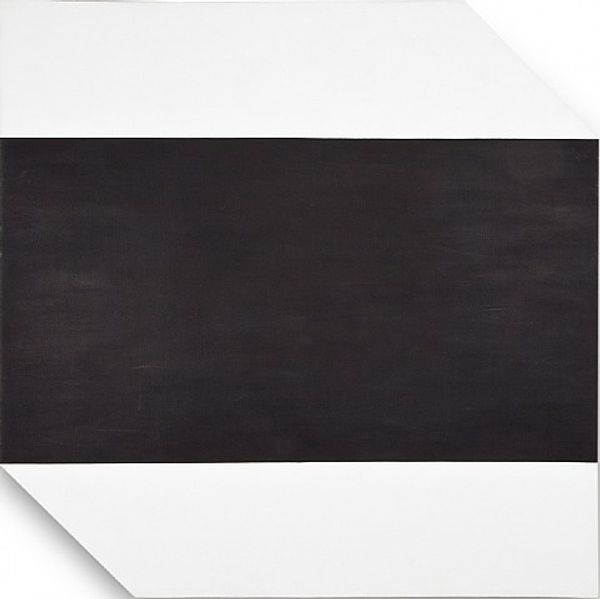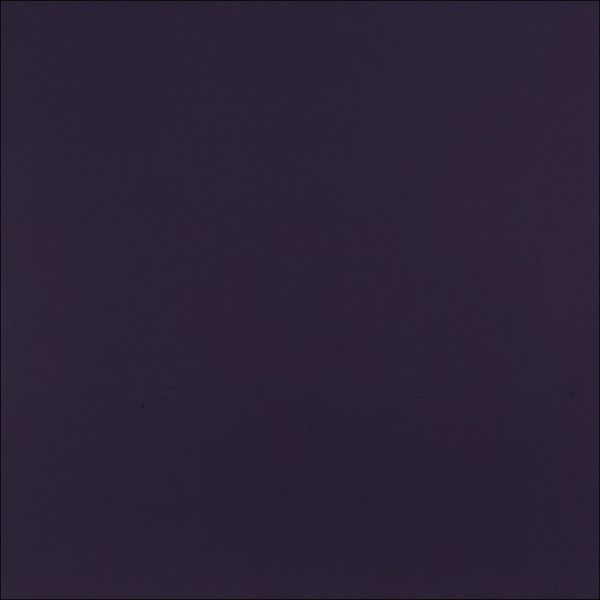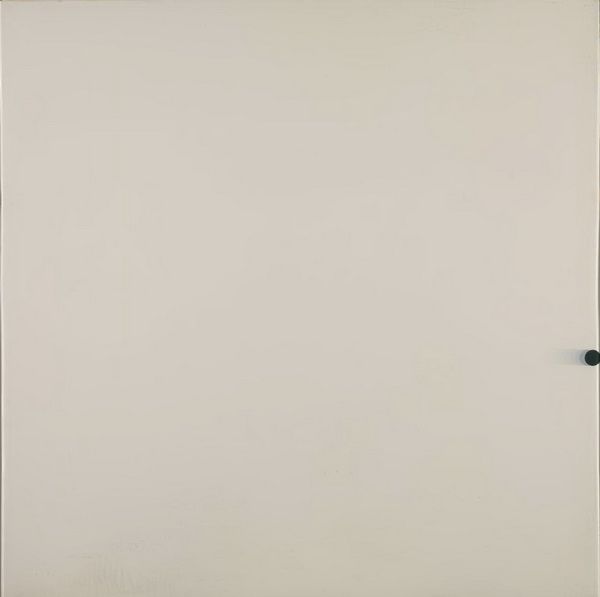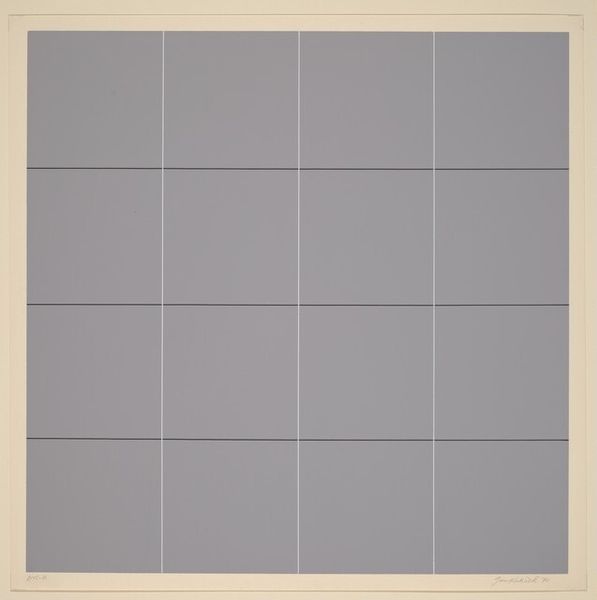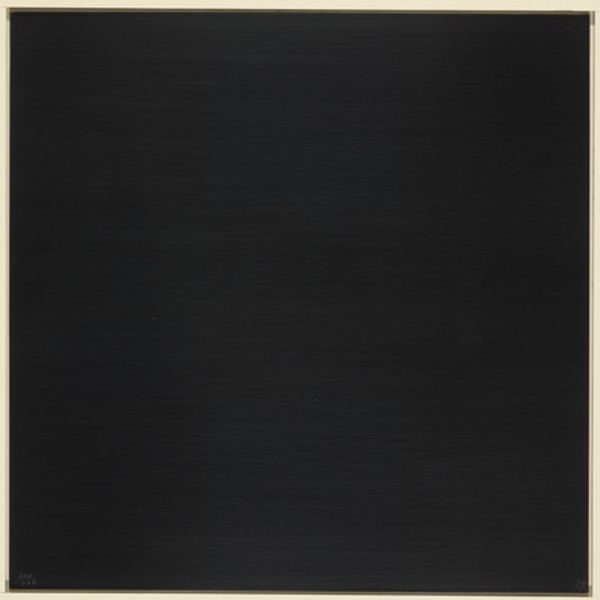
painting, acrylic-paint
#
monochromatic
#
painting
#
minimalism
#
colour-field-painting
#
acrylic-paint
#
modernism
#
monochrome
Dimensions: overall: 153 x 152.6 cm (60 1/4 x 60 1/16 in.) framed: 158.4 x 157.8 x 9.2 cm (62 3/8 x 62 1/8 x 3 5/8 in.)
Copyright: National Gallery of Art: CC0 1.0
Curator: Here, we're standing before Ad Reinhardt's "Abstract Painting, No. 34," created in 1964 with acrylic paint. What's your immediate reaction? Editor: A sense of…quietude? It's almost hypnotic. The longer I look, the more I feel drawn into its subtle depths, a dark dream from which figures are slowly emerging. Like Rorschach in the making, wouldn’t you say? Curator: Absolutely, Reinhardt aimed to strip painting down to its absolute essentials. No overt symbolism, no gesture, just… near-black. This approach seems more philosophical to me than expressive. It’s really about reduction, in the manner of Malevich and a reaction against Abstract Expressionism. Editor: I see what you mean, but I still get a kind of emotional charge. I mean, that grid subtly emerging – that evokes for me the ancient archetype of the mandala. You know, the symbolic representation of the universe, slowly revealing itself? And the monochrome quality somehow strengthens its universality and makes the viewer find their own image. Curator: It's interesting you say that. Reinhardt himself was quite explicit about his distaste for such symbolic interpretations. He saw it more as the ‘last painting one can paint’. To stop it all, it has a whiff of nihilism if you ask me. Editor: But even nihilism, darling, carries a message. To paint a "last" painting is to acknowledge the end of a cycle. Maybe not intentionally symbolic, but undeniably evocative, right? I'd see this work in a post-modern museum alongside a Damien Hirst or even Basquiat. All those guys point to endings and beginnings, whether on purpose or on accident, wouldn't you say? Curator: Possibly... The scale is imposing, yet its understated quality requires prolonged engagement to tease out any nuances. I wonder if today’s audiences have the patience for it. Do they even give themselves enough time to dive into something that only gives something back after deep attention. It kind of feels as a lost art in itself. Editor: I like that a lot. Maybe these paintings become tests for the world to come.
Comments
No comments
Be the first to comment and join the conversation on the ultimate creative platform.
